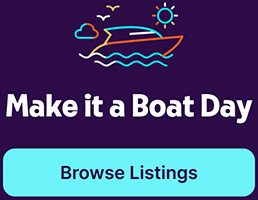Anchoring is a fundamental part of boating, whether you're a seasoned sailor or a weekend warrior. The anchor secures your boat in place, allowing you to relax, fish, or even sleep without worrying about drifting off. But what happens when it's time to retrieve your anchor? This guide will walk you through the best way to retrieve an anchor, step by step.
Understanding Your Anchor
Before we dive into the retrieval process, it's essential to understand the type of anchor you're using. Different anchors have different retrieval methods, so it's crucial to know your anchor type.
There are several types of anchors, including fluke anchors, plow anchors, and mushroom anchors. Fluke anchors are best for sandy or muddy bottoms, plow anchors work well on most types of seabed, and mushroom anchors are ideal for soft, silty bottoms.
Each anchor type has a unique design that affects how it's retrieved. For example, fluke anchors have sharp, pointed flukes that dig into the seabed, making them more challenging to retrieve than plow or mushroom anchors.
Preparing for Anchor Retrieval
Before you start the retrieval process, there are a few things you need to do. First, make sure your boat is in neutral to avoid any unexpected movements. Second, ensure all loose items are secured to prevent them from falling overboard during the retrieval process.
Next, you'll need to prepare your anchor retrieval equipment. This typically includes a windlass (a type of winch used for anchor retrieval), an anchor rode (the line connecting the anchor to the boat), and a boat hook (a long pole with a hook on the end used for grabbing the anchor rode).
Finally, you'll need to position your boat directly over the anchor. This can be done by slowly motoring towards the anchor while keeping a close eye on the anchor rode. When the rode is vertical, you're directly over the anchor.
Retrieving the Anchor
Step 1: Loosen the Anchor
The first step in retrieving your anchor is to loosen it from the seabed. This is done by applying a gentle upward force to the anchor rode. You can do this manually by pulling on the rode, or you can use a windlass to do the job for you.
As you apply upward force, the anchor should start to move. If it doesn't, you may need to apply more force. Be careful not to apply too much force, though, as this can damage the anchor or the rode.
Step 2: Pull the Anchor Aboard
Once the anchor is loose, you can start pulling it aboard. Again, this can be done manually or with a windlass. If you're doing it manually, make sure to use your legs, not your back, to avoid injury.
As you pull the anchor aboard, be careful not to let it swing into the side of the boat. This can cause damage to both the boat and the anchor. Instead, guide the anchor carefully into the anchor well or onto the deck.
Step 3: Secure the Anchor
Once the anchor is aboard, it needs to be secured. This is typically done by tying the anchor rode to a cleat or securing it in a rode locker. Make sure the anchor is secure before moving on.
Securing the anchor is important for two reasons. First, it prevents the anchor from accidentally falling overboard. Second, it keeps the anchor from moving around on deck, which can cause damage or injury.
Cleaning and Maintenance
After you've retrieved your anchor, it's a good idea to clean it. This removes any mud, sand, or marine growth that may have accumulated on the anchor. You can clean your anchor with a brush and some fresh water.
Regular maintenance is also important for keeping your anchor in good working order. This includes checking the anchor for signs of wear and tear, lubricating moving parts, and replacing any worn or damaged components.
Conclusion
Retrieving an anchor may seem like a daunting task, but with the right knowledge and equipment, it can be a breeze. Remember to prepare properly, follow the steps carefully, and always prioritize safety. Happy boating!
Ready to Anchor Your Business in Success?
Now that you know how to retrieve an anchor with ease, it's time to make sure your boating business is just as streamlined. With Getmyboat, you can list your boat for free and tap into a global audience eager to book a boat like yours. Our comprehensive tools are designed to power your business, from attracting new customers with standout listings to managing your bookings and payments effortlessly. Plus, with our competitive 1.5% transaction fee and tailored insurance coverage, you can sail smoothly towards greater earnings. Don't let this opportunity drift away—list your boat today and watch your boating business thrive!






